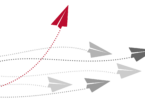Athens, Ga. – Zinc oxide, silicon and silver are some of the nanoscale building blocks that might one day enable breakthrough applications in nanoelectronics, photonics and bioengineering. Yiping Zhao and Zhengwei Pan of the University of Georgia Faculty of Engineering and the Franklin College of Arts and Sciences are building inorganic nanostructures for a diverse array of applications, from fuel cell storage to drug delivery devices, at a molecular scale representing the most promising frontier in scientific research today. At 1/10,000 the width of a human hair, the nanoscale can be difficult to perceive. One question among many which persists is what does it look like?
An exhibit at the Georgia Center for Continuing Education Conference Center and Hotel on March 21-31 answers this question. The exhibit, The Art of Science: Nanostructures Un-Structured, shows the work of Zhao and Pan with input from artist Michael Oliveri in a collaboration that demonstrates the interdisciplinary collaboration happening at UGA. With science, engineering and art faculty working in proximity to each other, unlikely synergies are given voice, often with dynamic outcomes.
Oliveri, a professor of art and digital media in the Lamar Dodd School of Art, is attuned to the powerful aesthetic value often taken by different forms of scientific data. “There are many applications for these types of images, from textiles to branding,” Oliveri said, noting that they also contextualize the nanoscale in a way words, graphs and figures cannot: by bringing in the added element of human imagination.
“These structures are much more similar to things in everyday life, even scenery in nature, though they are completely inorganic,” Zhao said. These might be odd sentiments coming from a physicist, but Zhao is a true ambassador of nanotechnology at UGA and believes it has a role to play in many areas across the university including places like law or journalism, veterinary medicine or education.
In the course of developing and building nanoscale structures, scientists and engineers like Zhao and Pan record photographic images – not as an end purpose though it is an important part of the work. The images are important to verify the sizes and shapes of the structures, to quantify certain properties – whether the structures are crystalline or measuring three-dimensional characteristics – critical to determine the purity of the materials. One of the few instruments which can record these types of images is an electron microscope. The framed photographs of the exhibit are enlarged images taken by a scanning electron microscope. Some of the images have been made into patterns by Oliveri and his assistants, and they reveal colorized dream-like landscapes of nanorods and nanotubes grown in the lab. They also reflect an important part of the work going on in nanofabrication rooms – verifying whether the work is really nanoscience.
“All of these nano materials were produced in our labs,” Pan says. “For nanotechnology applications, very high quality materials are a must – and these images are part of that process,” he says, conceding that he hopes to capture the imagination of the public and gain more attention for the work going on at this scale.
“Professor Oliveri’s collaboration with faculty in engineering will create a conceptual bridge that may soften the boundaries between these two academic disciplines,” said Georgia Strange, director of the Lamar Dodd School of Art. “One of the many potential benefits in this innovative interdisciplinary research is the increased understanding of phenomena across scale,” she said.
An opening reception for the exhibit, sponsored by the UGA Biobusiness Center, the Office of the Vice President for Research and the Lamar Dodd School of Art, will be held on Sunday, March 25 from 3-5 p.m. at the Georgia Center. The public is invited to attend.







